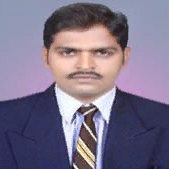
Ramesh M. Kagalkar
Work place: Computer Engineering. Department, Dr. D Y Patil School of Engineering and Technology, Pune, Maharashtra, India
E-mail: rameshvtu10@gmail.com
Website:
Research Interests: Speech Synthesis, Speech Recognition, Image Processing, Image and Sound Processing, Pattern Recognition
Biography
Ramesh M. Kagalkar was born on Jun 1st, 1979 in Karnataka, India and presently working as an Assistant. Professor, Department of Computer Engineering, Dr. D Y Patil School of Engineering and Technology, Charoli, B.K.Via Lohegaon, Pune, Maharashtra, India. He has 15 years of teaching experience at various institutions. He is a Research scholar in Visveswaraiah Technological University, Belgaum, He had obtained M.Tech (CSE) Degree in 2006 from VTU Belgaum and He received BE (CSE) Degree in 2001 from Gulbarga University, Gulbarga Karnataka, India. He is the author of fourtext book. He has filled and publish his one of research work in Indian Patent (Govt. of India, Controller General of Patent Design Trademarks Department of Industry Policy & Promotion). He has published more than 35 research papers in International Journals and presented few of there in international conferences. His main research interest includes Image processing, Gesture recognition, Speech processing, and CBIR. Under his guidance twelve ME students awarded degree in SPPU, Pune, three students at the edge of completion their ME final dissertation reports and four students started new research work and they have publish their research papers on International Journals and International conference.
Author Articles
Curvilinear Tracing Approach for Extracting Kannada Word Sign Symbol from Sign Video
By Ramesh M. Kagalkar S.V Gumaste
DOI: https://doi.org/10.5815/ijigsp.2017.09.03, Pub. Date: 8 Sep. 2017
Gesture based communications are utilized as a primary method of correspondence, however, the differing qualities in the sign image portrayal limit its use to district bound. There is a tremendous assorted quality in the sign image portrayal from one nation to another, one state to another. In India, there is distinctive gesture-based communication watched for each state locale. It is henceforth exceptionally troublesome for one area individual to convey to other utilizing a signature image. This paper proposes a curvilinear tracing approach for the shape portrayal of Kannada communication via gestures acknowledgment. To build up this approach, a dataset is consequently made with all Swaragalu, Vyanjanagalu, Materials and Numbers in Kannada dialect. The arrangement of the dataset is framed by characterizing a vocabulary dataset for various sign images utilized as a part of regular interfacing. In the portrayal of gesture-based communication for acknowledgment, edge elements of hand areas are thought to be an ideal element portrayal of communication through signing. In the preparing of gesture-based communication, the agent includes assumes a critical part in arrangement execution. For the developed approach of sign language detection, where a single significant transformation is carried out, a word level detection is then performed. To represent the processing efficiency, a set of cue symbols is used for formulating a word. This word symbols are then processed to evaluate the performance for sign language detection. Word processing is carried out as a recursive process of a single cue symbol representation, where each frame data are processed for a curvilinear shape feature. The frame data are extracted based on the frame reading rate and multiple frames are processed in successive format to extract the region of interest. A system outline to process the video data and to give an optimal frame processing for sign recognition a word level process is performed.
[...] Read more.Other Articles
Subscribe to receive issue release notifications and newsletters from MECS Press journals